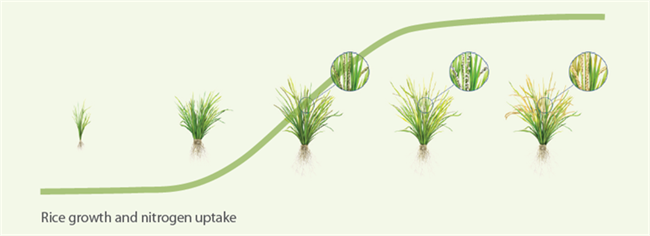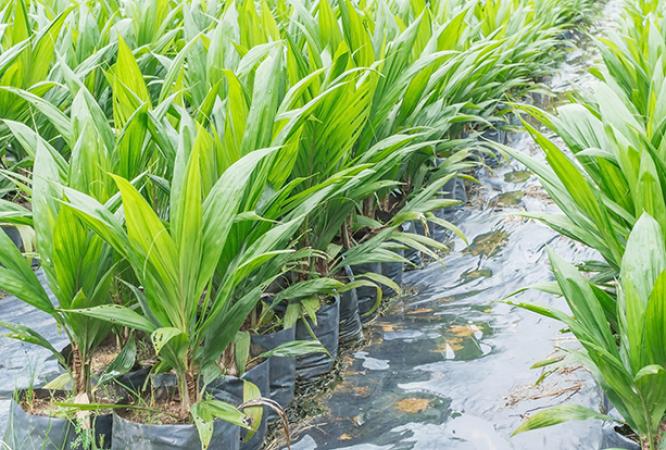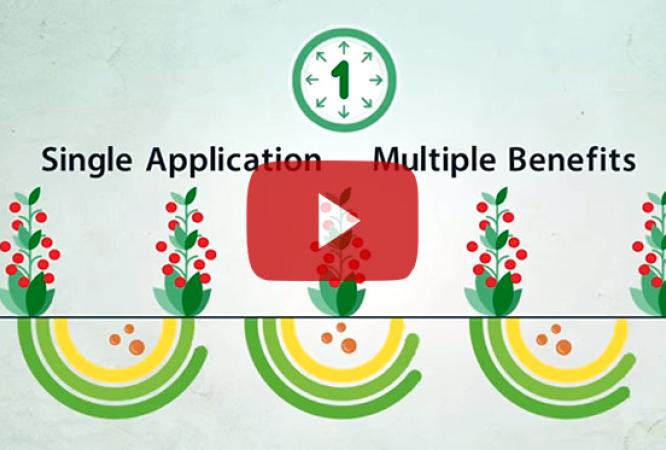Controlled Release Nitrogen for Better Rice Crops
Rice is the most extensively eaten human food globally, ingested by more than half of the world’s population daily. In Asia, where 90% of rice is consumed, and Africa and Latin America, as well as Europe and North America – where this staple is increasingly essential – ensuring its supply, nutritional value and environmental soundness is crucial.
Rice is often grown in aquatic environment (paddy), where unique conditions impose challenges on the nutrition of the crop along the growth season. Haifa’s CoteN™ controlled release nitrogen tackles these challenges, ensuring optimal nutrition for healthy growth and quality yield.
Nitrogen – a must for rice growth
The rice crop requires nitrogen supply throughout the growth season, with s-shaped uptake curve: slow rate during the first weeks after seeding, followed by steady uptake rate that then slows down towards the end of the season. Most of the nitrogen is required from tillering to flowering. Nitrogen increases plant height, panicle number, leaf size, spikelet number, and number of filled spikelets, which largely determine the yield capacity of a rice plant.

Nitrogen deficiency
The initial symptom of nitrogen deficiency in rice is a general light green to yellow color of the plant. It is first expressed in the older leaves because nitrogen is translocated within the plant from the older leaves to the younger ones. Prolonged nitrogen deficiency causes severe plant stunting, reduced tillering and yield reduction.
The paddy challenge
The traditional method for cultivating rice is flooding the fields while, or after, setting the young seedlings. This reduces the growth of weeds and deters rodents and pests. However, flooding considerably accelerates losses of nitrogen, through ammonia volatilization, denitrification, leaching, and or runoff. When applying conventional granular fertilizers, N recovery seldom exceeds 30-40%.
Proven results
The benefits of CoteN™ nutrition have been established by trials and demo plots in various rice growing regions.

1. Valdetorres and Guadalperales, Spain
Fertilization treatments (same in both locations)
|
Treatment |
Fertilizers | N level | Applications |
|
CRF |
CoteN™ Mix 20-10-20 (35-0-0 % coated), 700 kg/ha | 140 kg/ha | 1 |
|
Conventional |
Base dressing: granular fertilizer 12-8-18, 900 kg/ha Side dressing: ammonium sulfate (21% N), 200 kg/ha |
150 kg/ha | 2 |
Results
CoteN™: same rates, less applications, higher yield

2. Rice trial in Brazil
CoteN™ treatments were given at a single application. Farmer’s practice and trial station’s practice involved 3 applications: at base, V3 and V5.
Rate of 100% provided 110 kg nitrogen per hectare.
Results

Additional trials

In Korea in 2002, researchers conducted experiments with controlled release fertilizer for paddy rice. Comparing the effects of Haifa’s CRF-incorporated compound fertilizer with those of common, conventional compound fertilizer, they examined efficiency duration, growth status and yield.
Results showed that in comparison with standard fertilizers, CoteN™ Mix total-base fertilization resulted in greater tiller and panicle number, and yield than conventional fertilization, even with split fertilization. CRF brought about the earlier appearance of tillering, higher tiller number and higher number of panicle spikes in harvesting season. As assumed from the heightened number of panicle spikes, CoteN™ treatments resulted in significantly higher yields than those of the control group, Further, chlorophyll levels in the plants were higher over the entire growth period.

In Vietnam, trials conducted in five different provinces, showed that three additional applications of CoteN™ fertilizer, added to the conventional practice, increased yields by 13%-15.7%. A two-year trial at three other sites showed greater rice yield and net profit with CRF than with control treatments.
The Vietnam trials also pointed out that CRF lowered total production costs as compared with conventional practice. Plants treated with CRF were healthier than those in the control group, reducing necessary amounts of pesticide, fallen plants and labor costs.
Need more information about growing rice? You can always return to the rice fertilizer & crop rice




